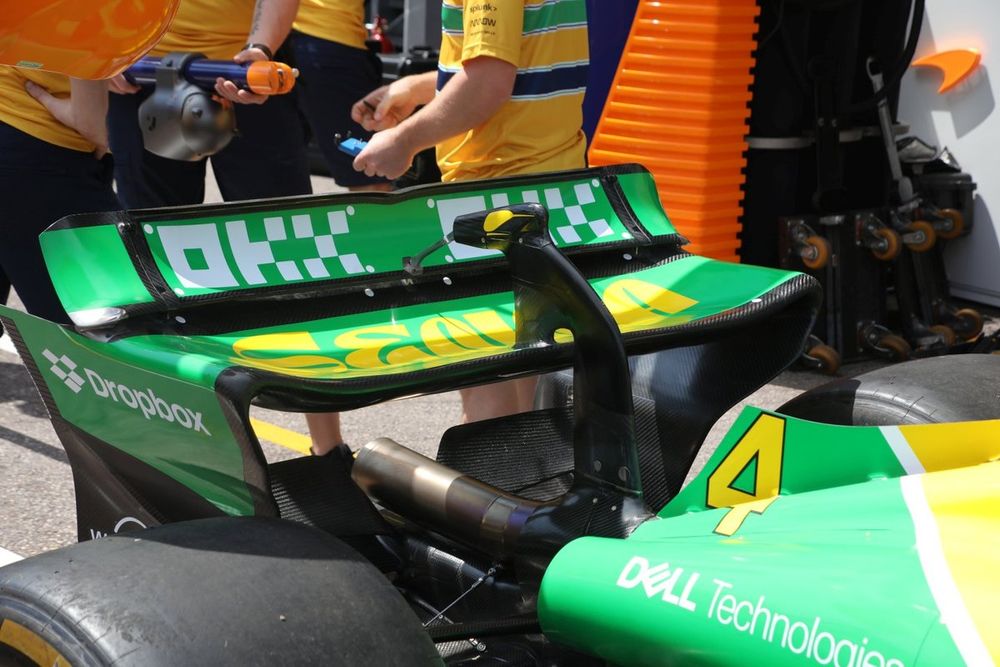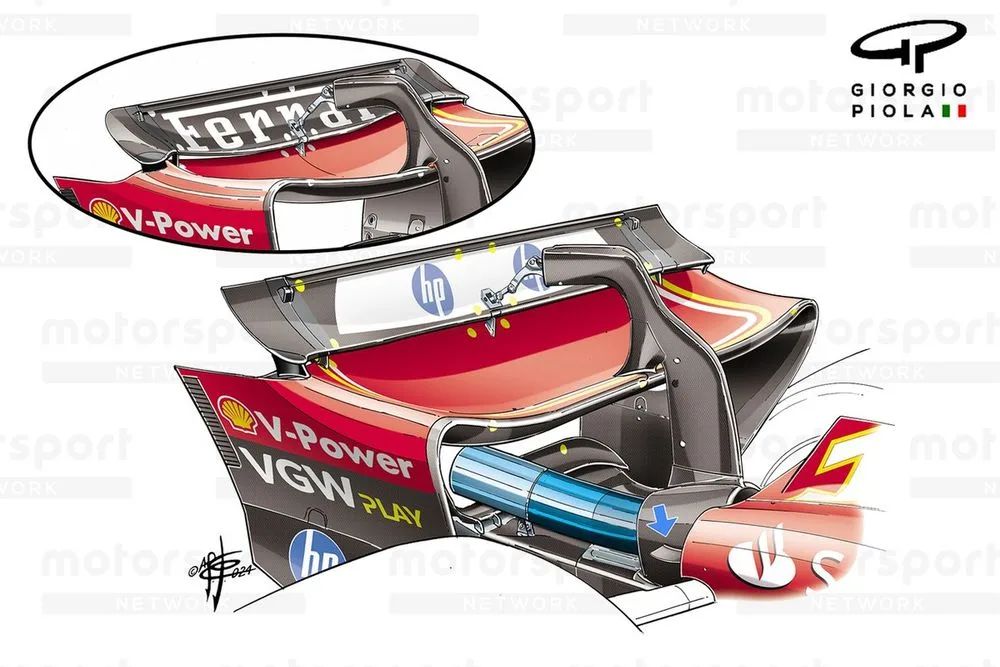Cost cap restrictions have sometimes led teams to question whether the investment of a Monaco-only rear wing is worth it, or whether they are better off just sticking with a higher-downforce specification that can be used at places like Budapest and Singapore.
But with F1’s fight at the front between Ferrari, McLaren and Red Bull so close right now, all three teams knew they could not hold back and leave any performance on the table by not going all in with a Monaco rear wing.
Here we take a look at how the three teams approached the Monte Carlo weekend.
Photo by: Giorgio Piola
Ferrari’s high-downforce variant is in the same design family as the medium-downforce wing that was updated in Imola, and features a revised tip section.
The revisions to this portion of the wing revolve around its overall shape, with a much flatter and wider profile preferred. This extends the span of the upper portion of the wing and alters the position of the tip to reposition the vortex that’s shed from the surface.
The flatter profile also results in the flap and bracket connection being altered, with the flap kneeling down over the bracket to create a different shedding surface, whilst also creating a difference in how it interacts with the rear endplate cutout.
Even with the new flap tip section, Ferrari had used the same mainplane and top flap configuration for the first seven races of 2024. However, it did have a higher downforce wing on hand at the Japanese Grand Prix that was not used at all.
That one is understood to be a different specification entirely to the one introduced for Monaco, and more in line with the outgoing specification of tip section, allied to a higher-downforce mainplane and top flap design used in 2023.
This new, high-downforce rear wing features a mainplane and top flap that take up more of the allowable space within the box region permitted in the regulations, with a flatter central leading edge employed on the mainplane, resulting in a tighter radius where the mainplane meets the endplate.
Similarly, the upper flap has a flatter leading edge and curvature across its span than the lower-downforce variant.
Meanwhile, the small winglets housed on the side of the rear wing support pylon that Ferrari first introduced at the Australian Grand Prix also returned to further increase downforce (blue arrow).

McLaren MCL38 technical detail
Photo by: Giorgio Piola
McLaren had a new high-downforce rear and…
Click Here to Read the Full Original Article at Autosport.com – Formula 1 – Stories…

